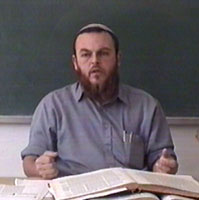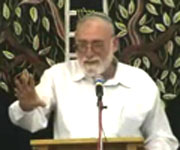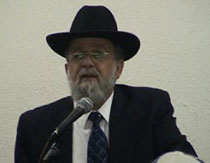Beit Midrash
- Sections
- Chemdat Yamim
- Parashat Hashavua
- Torah Portion and Tanach
- Torah Portion
- Bereshit
Let us now discuss David. At first glance, David was known as the youngest of his siblings, but in Divrei Hayamim (I, 2:15), it specifically stresses that he was the seventh. There are several other ways he was connected to the number seven. According to the gemara, he was born and died on Shavuot (which completes the sefira period of seven weeks of seven days). David lived 70 years, was king in Chevron for 7 years and the most central figure in his life was his wife Batsheva (meaning, girl of 7). Malchut (royalty), which David represents, is the seventh of the sefirot.
The attribute of malchut is delineated by the concept of "it has nothing of its own." This connects to the midrash about David, who did not have life allotted to his soul until Adam granted him 70 years. The gemara (Chulin 89a) lists David as one of the people who was most humble. This is a trait that endears Bnei Yisrael in Hashem’s eyes when we succeed in fulfilling it, as the pasuk says: "Not for your being more than all of the nations did I desire and choose you, for you are the smallest of all the nations" (Devarim 7:7). The gemara comments in the name of Hashem: "I desire you because even when I bestow greatness upon you, you make yourselves small before Me." This was exemplified by Avraham, Moshe, Aharon, and David. David said, "I am a worm and not a man" (Tehillim 22:7). It is therefore appropriate that the navi refers to David (pre-kingdom) as "the little one."
David’s rival, Shaul, was from the Tribe of Binyamin but is also considered from Yosef. We see this in the fact that Shaul’s relative was referred to as "the first to the House of Yosef" (Shmuel II, 19:21). This special connection between Binyamin and Yosef appears in several places. When the disguised Yosef asked Binyamin about his life, Binyamin told him that all his ten sons were named after elements of Yosef’s life (Tanchuma, Vayigash 7). The gemara (Sota 36b) continues this idea: Yosef was fit to have twelve tribes come from him, like Yaakov. He fulfilled this partially through his brother Binyamin (Yosef’s 2 and Binyamin’s 10).
If Shaul represents Yosef and David represents Yehuda, then Mashiach Ben Yosef preceding and preparing the world for Mashiach Ben David will be a repeat. Similarly, the sixth day of the week prepares for Shabbat, the seventh. Shaul represents the first description of Adam, as the one who was created on the sixth day in Hashem’s image. David is connected to Adam’s second description, which is more connected to Shabbat.
The advantage of Shaul, who was called a full tzaddik or tzadduk yesod olam, was also the cause of his downfall, as he did not know how to extricate himself from the negative circumstances of eventual sin. It was David who fit the idea of one who, even if he sins, knows how to get back up through the teshuva process. It is this that made him fit for an eternal dynasty.

Why Do Children Start With Vayikra?
Rabbi Shaul Yisraeli zt"l | 5771

Giving More Than You Have?
Rabbi Yossef Carmel | 20 Cheshvan 5767

Parashat Hashavua: Is “Not Good” the Same as Bad?
Rabbi Yossef Carmel | Tishrei 5786























